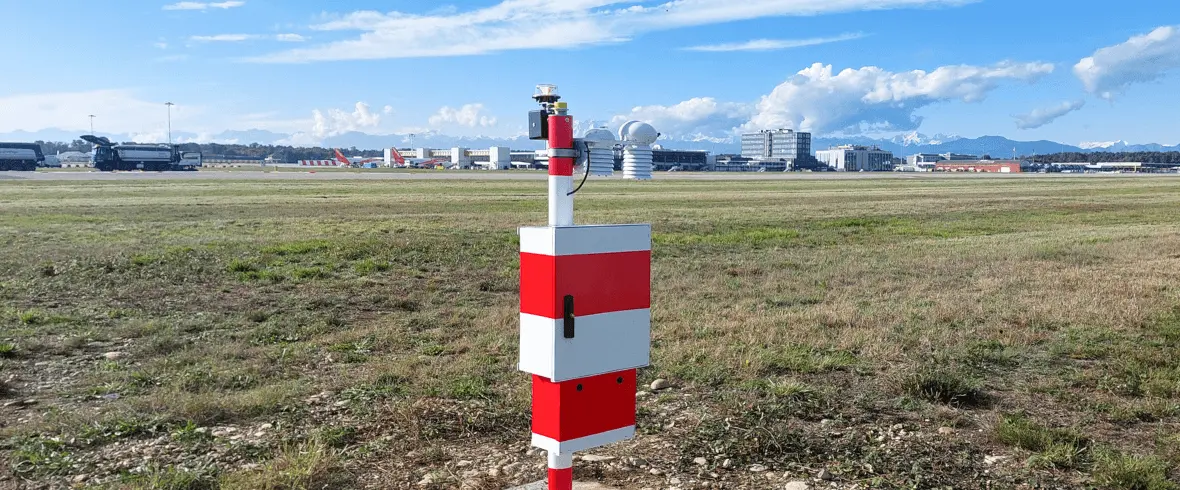Optimising airport safety with the installation of the ATLAS system at Malpensa and Linate

From 4 November 2021, the International Civil Aviation Organization (ICAO) introduced the Global Reporting Format (GRF). This standard aims to globally harmonise the process of reporting airport runway conditions, eliminating complexity and replacing various existing methods. This approach introduces key parameters such as:
- The runway condition code RWYCC, a variable from 0 to 6, indicating runway conditions in relation to the type and amount of contaminants present;
- The type of contaminant, i.e. standardised descriptions of the type of contamination present on the runway, taken from a list of 15 descriptors for climate contamination;
- The assessment of contaminant depth greater than 3 mm for certain types of contaminants (standing water, hail, dry snow and wet snow);
- The percentage of contaminant coverage to be reported within predefined ranges such as 25%, 50%, 75% or 100% of the third of the runway.
ATLAS: a revolution in aviation
The GRF integrates seamlessly with ATLAS, a complete solution that automates the detection and measurement of required parameters without the need to close the runway. The system, combining advanced hardware and software, represents a turning point in aviation safety.
Installation of ATLAS at Malpensa and Linate
LSI LASTEM has successfully completed the installation of ATLAS at Linate airport, with one runway, and Malpensa, with two runways. Each runway is equipped with 18 sensors equally distributed on the asphalt and divided into three sections. Each section is monitored by a monitoring station with six sensors, positioned halfway between the centre line and the edge of the runway. These sensors provide essential data on asphalt temperature, contaminant type and contaminant thickness. The three data acquisition stations on the sides of the runway ensure reliable and real-time transmission of information.
Advanced sensors for runway monitoring
The system consists of a complete weather station, equipped with environmental sensors, a visibility sensor and several pavement condition sensors. These include:
Compact weather sensor: measures air temperature, relative humidity, precipitation and visibility, discriminating types of contaminants and transitions between pavement conditions.
Floor sensor: detects specific contaminants and their depth. 2 to 6 sensors are recommended for every third of the runway.
Snow level sensor: identifies the presence of snow and measures the level of the snowpack, recognising contaminants and transitions. Installation is required for the entire runway in regions with cold climates.
The Cloud ATLAS application in airports
With the introduction of the ATLAS system at the Linate and Malpensa airports, a cloud application with a dedicated server was implemented. This application, already operational and accessible from the Malpensa Control Room, allows the real-time display of crucial information such as ice warnings on the runway, GRF parameters and additional data such as air temperature and friction coefficient. The system offers efficient management of weather and pavement conditions, presenting detailed information for every third of the runway and supporting timely and effective maintenance decisions.
LSI LASTEM’s commitment to aviation safety
Advanced runway surface condition monitoring provides accurate assessment according to GRF parameters, ensuring safe airport operations in all weather conditions. The investment in ATLAS technology marks a step towards advanced and global aviation safety.
